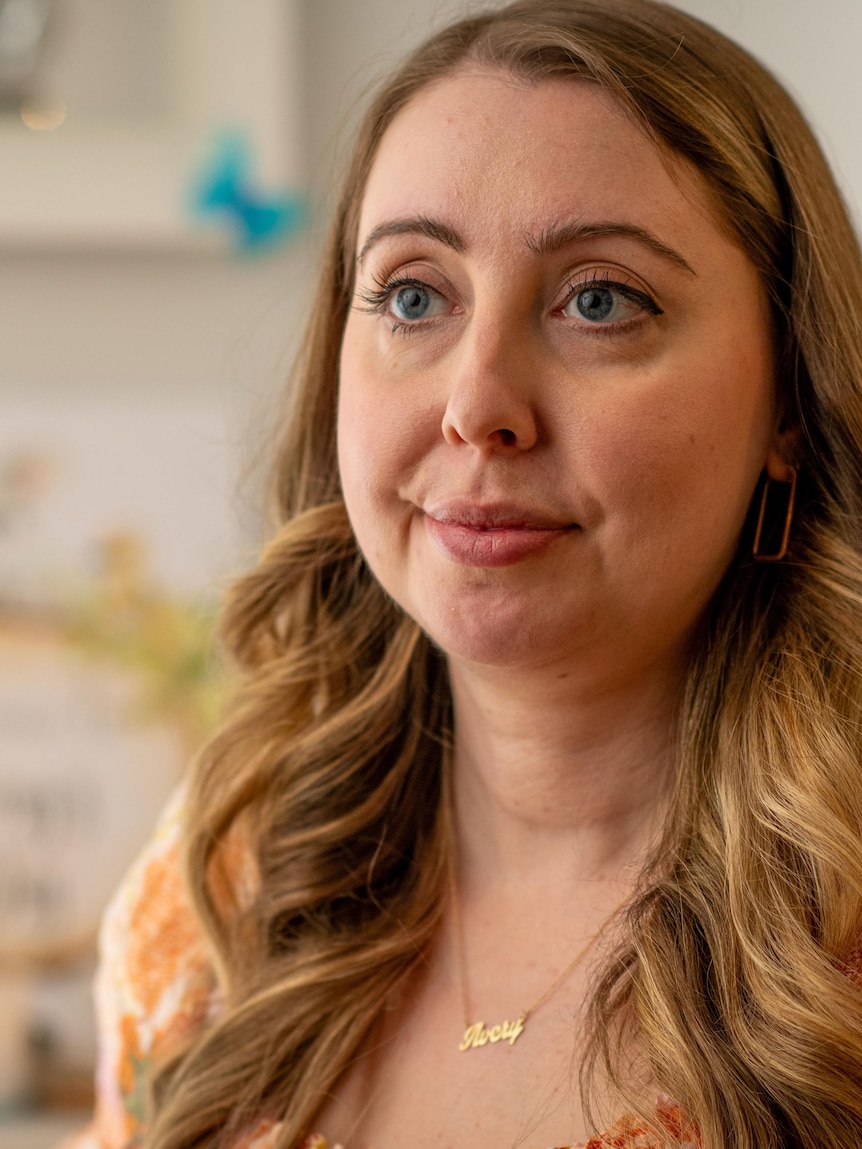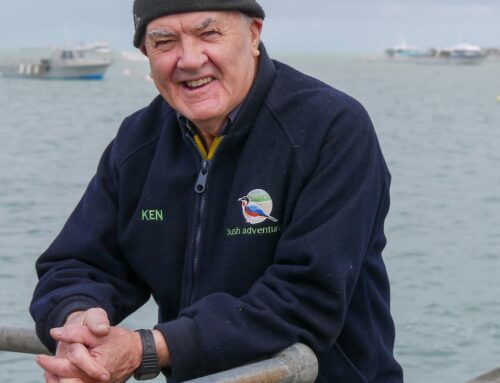WARNING: This story contains content that may be distressing to some readers.
After falling pregnant on their first transfer through IVF, Megan and Darren Macolino spent months planning the arrival of their son Avery.
“We were ecstatic — as was our whole family,” Mrs Macolino said.
“We just imagined our life with this little boy.”
At 13 weeks, the couple found out Avery had an umbilical cord abnormality in the placenta — but said they were reassured by their doctor.
“I had developed anaemia so I had no energy, I felt sick all the time, I had lots of blood noses,” Mrs Macolino said.
“We were told that everything was fine and that we didn’t need extra monitoring or extra care for that, so we trusted our obstetrician’s advice.”
Mrs Macolino said she was about 35 weeks pregnant when she began experiencing unusual movements from Avery.
“Two days before he was born I said that I felt that he would be coming soon, and I was having a lot of pain, but I was dismissed and told that ‘no, everything’s OK, your baby still has a long way to go’,” she said.
“Unfortunately, two days later we found out he had passed away.”
Mr Macolino said it was not until Avery’s autopsy results came back a month later that his wife discovered she had been in a high-risk pregnancy.
“Essentially Megan’s immune system was attacking Avery’s placenta as a foreign object in her body,” he said.
“We know for a fact, based on his autopsy, that if he was pulled out at, say, 34 weeks instead of 35 that he most likely would have been perfectly fine.”
Stillbirth rate static for decades
On an average day in Australia, six babies are stillborn, impacting more than 2,000 families each year.
According to the Australian Institute of Health and Welfare (AIHW), the overall stillbirth rate has remained between 6.7 and 7.7 per 1,000 births between 2003 and 2021, when the most recent available data was recorded.
Former midwife and Associate Professor Jane Warland turned to a career in research after experiencing stillbirth with her fourth child in 1993.
Her experience is what led her to want to investigate the modifiable risk factors of stillbirth.
“We haven’t made too much of an inroad into stillbirth rates in Australia for more than 30 years,” Dr Warland said.
“There’ve been tremendous [technological] advances in other areas — if you think of cancer, for example, it’s huge the things that we now know that we didn’t 30 years ago.
“But there isn’t anything new as far as being able to identify the baby who might be at risk of stillbirth.
“We are still very much in the hands of the mother and that’s why we need to listen to her, and if she is concerned then we should be concerned.”
Data delays ‘a bit of a problem’
In 2020, the National Stillbirth Action and Implementation Plan was launched following a 2018 Senate inquiry which examined the lack of movement on Australia’s stillbirth rate.
In the plan, the federal government set a target to reduce the number of stillbirths by 20 per cent by December 2025.
The government declined to comment as to whether it was on track to reach that target, but said an independent preliminary evaluation report of the Stillbirth Action Plan conducted last year “showed that progress has been observed”.
“The Australian government is committed to reducing stillbirths and ensuring families affected by stillbirth receive respectful and supportive care,” a spokesperson for the Department of Health and Aged Care said.
But Dr Warland said given the most recent data on stillbirths was from 2021, it was difficult to keep track of any progress.
“The data is collected at the time of the stillbirth and then different states put that data into different systems,” she said.
Dr Warland said those systems do not “end up talking to each other” until “about two years later”.
“So all of the information that we have about stillbirth rates is at least two years old – and that’s a bit of a problem,” she said.
An AIHW spokesperson said the data was typically received around 18 months after the end of a given year, and that the lag was primarily because “jurisdictional committees require time to conduct mortality reviews”.
They said the data from 2022 was expected to be published “later this year”.
Dr Warland said the government should be prioritising the collection and release of contemporaneous data on stillbirths, just as it did during the pandemic with COVID-19.
“We knew who was having COVID, where they were, what hospital they were in, whether they were in the normal ward or in intensive care, if they’d had vaccinations, how many vaccinations they’d had and when they died — yesterday,” she said.
“Compare that with what we know from stillbirth.
“We know that more than 2,000 babies died in 2021 — that’s it.”
According to evidence from the Centre of Research Excellence in Stillbirth, “sub-standard care” had been identified as contributing to around half of stillbirths, with up to 30 per cent considered to be preventable.
While that means a large proportion of stillbirths are still unavoidable, Dr Warland said other developed countries have had success in reducing rates.
“We’ve got countries in particular like Scotland that regularly collect and publish their data monthly,” she said.
“They also made a decision to require every midwife or obstetrician to have a conversation around foetal movements in the middle of the pregnancy … [and] over the next four or five years they reached a 20 per cent drop.
“We also saw in New Zealand a close to 20 per cent drop when midwives started telling women to go to sleep on their side — we can definitely achieve a drop.”
Women empowered to ‘trust their gut’
Mrs Macolino said there was never any mention of stillbirth throughout her antenatal care or during any of her appointments with her obstetrician.
“We weren’t aware that crazy, rapid movements that babies can make were also a sign of distress — that they can be having a seizure or a stroke in utero, and in fact that’s exactly what happened,” she said.
“I feel like if I had known about baby movements and the risks of stillbirth, I might have had more of a chance to try to intervene and save his life.”
Her experience is one of the many that Tracey Clarke has heard in her role as a manager at Still Aware, a not-for-profit organisation which raises awareness of stillbirths and aims to educate clinicians about how to safely discuss the risks.
“A majority of people that have given birth to a stillborn baby reach out to us and say we wish we received information during pregnancy, we wish that we’d listened to our instincts,” Ms Clarke said.
“Bringing up stillbirth is nothing an expectant mother wants to talk about — but it is the reality.
“We know that stillbirth rates are only going to be decreased by empowering women to trust their instincts rather than doing research about why the baby died.”
Mrs Macolino said openly talking about losing Avery had been a healing experience for her and her husband.
“We don’t ever want to pretend that [Avery] didn’t exist or that this didn’t happen,” Mrs Macolino said.
“He’s left us a really incredible legacy, we’re extremely proud of him.
“He’s taught us so many lessons and changed our lives forever.”




